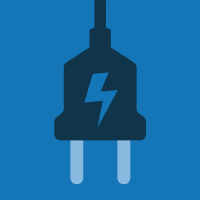Topic Editors




Advanced Operation, Control, and Planning of Intelligent Energy Systems
Topic Information
Dear Colleagues,
We are pleased to announce a call for papers on our Topic “Advanced Operation, Control, and Planning of Intelligent Energy Systems”! As global energy systems are undergoing a transition toward decarbonization and digitalization, demands for intelligent energy systems with the more advanced operation, control, and planning are increasing. However, the operation, control, and planning of such intelligent systems pose a number of challenges that need to be addressed. Currently, the uncertainties, economic efficiencies, technical feasibilities, and environmental sustainability of energy systems all require more intelligent solutions. Therefore, researchers from both academia and industry are actively developing strategies and schemes to optimize the production, distribution, and consumption of energy in sustainable and efficient manners. This Topic provides a platform for researchers around the world to present their research related to the operation, control and planning of intelligent energy systems. Topics of interest include but are not limited to the following:
- Machine learning and computational intelligence for energy systems;
- Advanced methodology for energy system operation and control;
- Smart planning, market design, and regulatory frameworks for energy systems;
- Digitalization and management of urban energy systems;
- Power electronics for energy systems with renewables;
- Power electronics for power conversion, energy storage, and control in energy systems;
- Integration of other emerging technologies in the operation, control, and planning of energy systems.
Dr. Ziming Yan
Dr. Rui Wang
Dr. Chuan He
Dr. Tao Chen
Dr. Zhengmao Li
Topic Editors
Keywords
- intelligent energy systems
- energy system operation, control, and planning
- machine learning and computational intelligence
- smart control of power converters
- emerging technologies in energy systems
Participating Journals
| Journal Name | Impact Factor | CiteScore | Launched Year | First Decision (median) | APC | |
|---|---|---|---|---|---|---|

Electricity
|
- | 4.8 | 2020 | 27.9 Days | CHF 1000 | Submit |

Electronics
|
2.6 | 5.3 | 2012 | 16.4 Days | CHF 2400 | Submit |

Energies
|
3.0 | 6.2 | 2008 | 16.8 Days | CHF 2600 | Submit |

Processes
|
2.8 | 5.1 | 2013 | 14.9 Days | CHF 2400 | Submit |

Resources
|
3.6 | 7.2 | 2012 | 26.1 Days | CHF 1600 | Submit |

World Electric Vehicle Journal
|
2.6 | 4.5 | 2007 | 16.2 Days | CHF 1400 | Submit |

Journal of Marine Science and Engineering
|
2.7 | 4.4 | 2013 | 16.4 Days | CHF 2600 | Submit |

MDPI Topics is cooperating with Preprints.org and has built a direct connection between MDPI journals and Preprints.org. Authors are encouraged to enjoy the benefits by posting a preprint at Preprints.org prior to publication:
- Immediately share your ideas ahead of publication and establish your research priority;
- Protect your idea from being stolen with this time-stamped preprint article;
- Enhance the exposure and impact of your research;
- Receive feedback from your peers in advance;
- Have it indexed in Web of Science (Preprint Citation Index), Google Scholar, Crossref, SHARE, PrePubMed, Scilit and Europe PMC.


